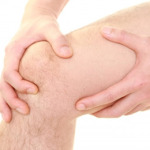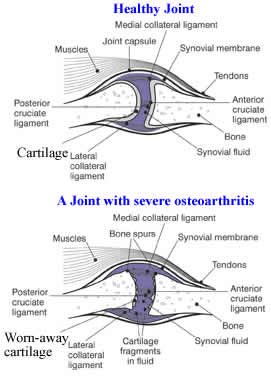Does Osteoarthritis Spread Throughout Body?
There are several forms of joint disease or familiar called as arthritis. One of them is osteoarthritis (OA). It occurs when cartilage (especially articular cartilage, a tough tissue but flexible) deteriorates. The poor function of this cartilage can narrow the space between bone ends. This can cause joint pain, swelling, or damage over time. Does this kind of arthritis spread throughout the body?
 Each case of OA can be unique, since the disease affects different individuals differently. Joint pain and stiffness are the common symptoms of the disease (see this section for other symptoms).
Each case of OA can be unique, since the disease affects different individuals differently. Joint pain and stiffness are the common symptoms of the disease (see this section for other symptoms).
Like most things in arthritis, the symptoms of OA affect joint. Typically they affect the bone ends of knees (mostly), lower back, hips, neck, thumbs, and fingers.
OA is not related to the abnormality of immune system such as in RA (rheumatoid arthritis). Instead, it is related to ‘wear and tear’ of a tough tissue called cartilage, as noted before. Cartilage is so important for your joints since it acts as a pressure /stress absorber so thus joint can move with almost no friction.
The function of cartilage can break down and wear away over time. That’s why age is the most significant risk factor of OA. As you age, your risk of developing OA increases.
In most cases, OA develops gradually. It can take many years before eventually the symptoms appear. However, in a few cases, it may occur quickly. For instance, if you are an athlete, there is a greater chance for you to get an accident from your sport activity that can damage your cartilage suddenly.
The bad news, basically cartilage cannot heal on its own since there are no blood vessels that directly support it to regenerate. And if it does heal, it will not heal as quickly as other tissues in your body such as muscles, bones, or skin. However, some treatment options are available to help repair and rebuild it.
For this reason, it’s important to protect your cartilage. Articular cartilage in your knees can be the most vulnerable object to get damage from your daily activities. See also this section for helpful tips to protect and keep your knee joints healthy!
Now you know that the degenerative function of your cartilage in your joint is the key of why OA can occur. One of interesting issues, many people with OA can have more than one affected joint.
The disease can be limited to a single affected-joint. But without clearly reason, sometime it can progress and involve other joints. Does this mean that the disease can spread?
The answer is ‘No’. OA stays on the joint with the damaged cartilage and doesn’t spread. It is also not contagious.
But in the same individual, there is a chance for other joints to have damaged cartilage, causing a new OA in different joint. But this doesn’t mean that one affected joint has a direct link in causing a new problem in another joint.
It’s not fully understood yet why many people with OA can have it in more than one joint. But it seems an affected joint may indirectly affect the chance of other joints to develop the disease.
For instance, OA in the left knee or ankle can affect the way of how you walk and interfere with your daily activities. This may force other joints to work harder than usual (particularly such as the right knee or ankle), which then put them at greater chance of developing the damaged cartilage over time.
In many cases, this kind of arthritis affects the following joints:





Thank you for your help. I have arthritis (osteo) in my neck, back, legs, feet, toes, shoulders, arms, hands, fingers, along with stenosis in my back, 3 surgeries and a back full of stainless steel. I am 80 years old, and the pain is not exorbitant yet, but it is really annoying. My depression meds are handled by my GP from prescriptions from my psychiatrist in Tennessee. I take 30 pills a day and don’t want to think about the pain if I didn’t take them.